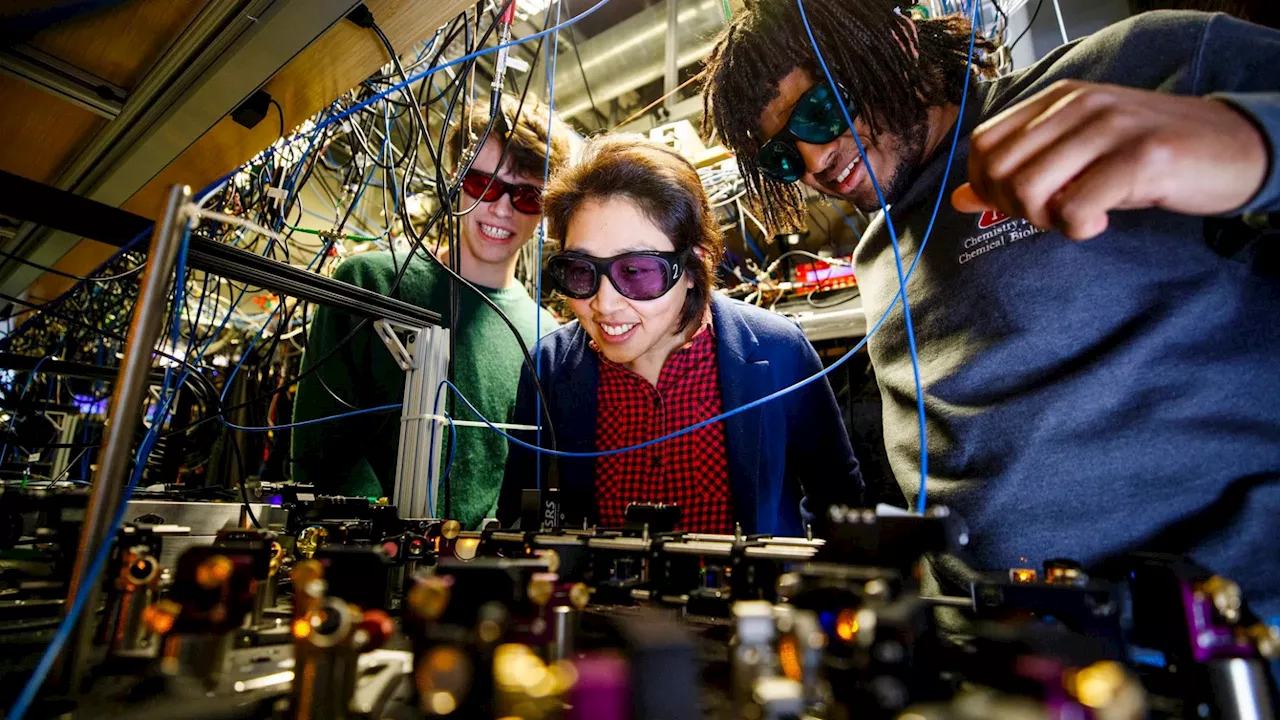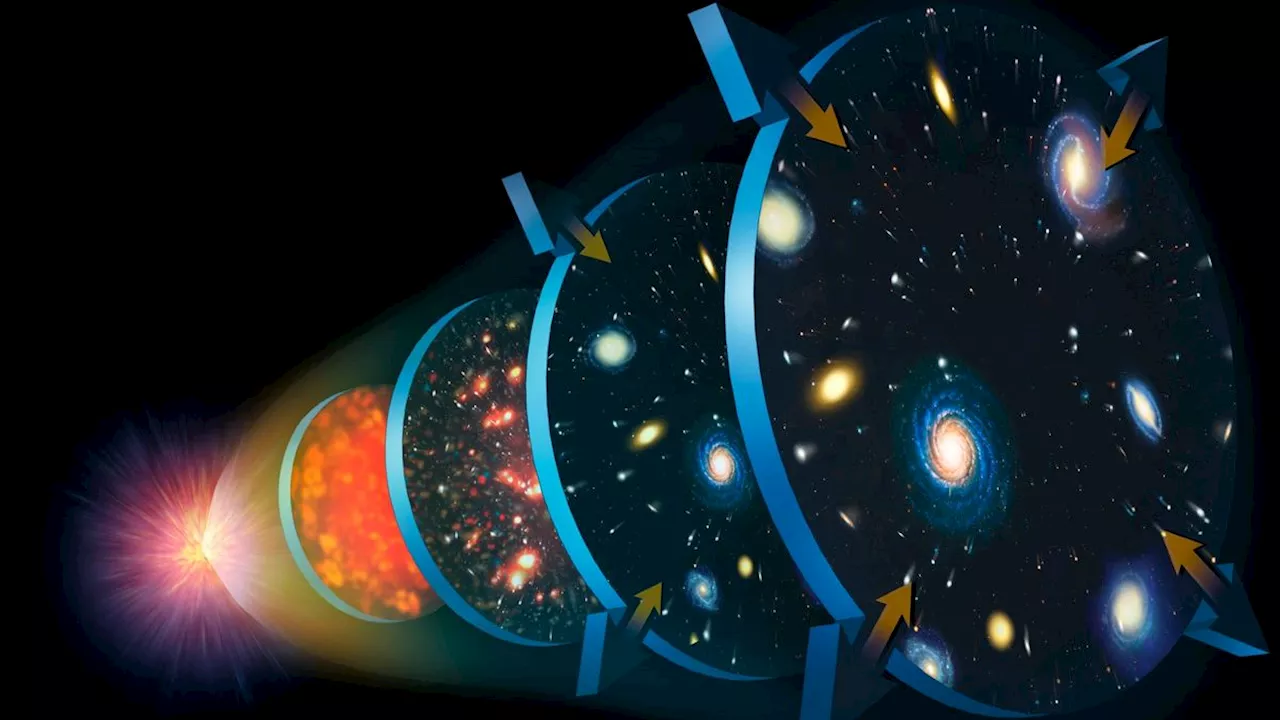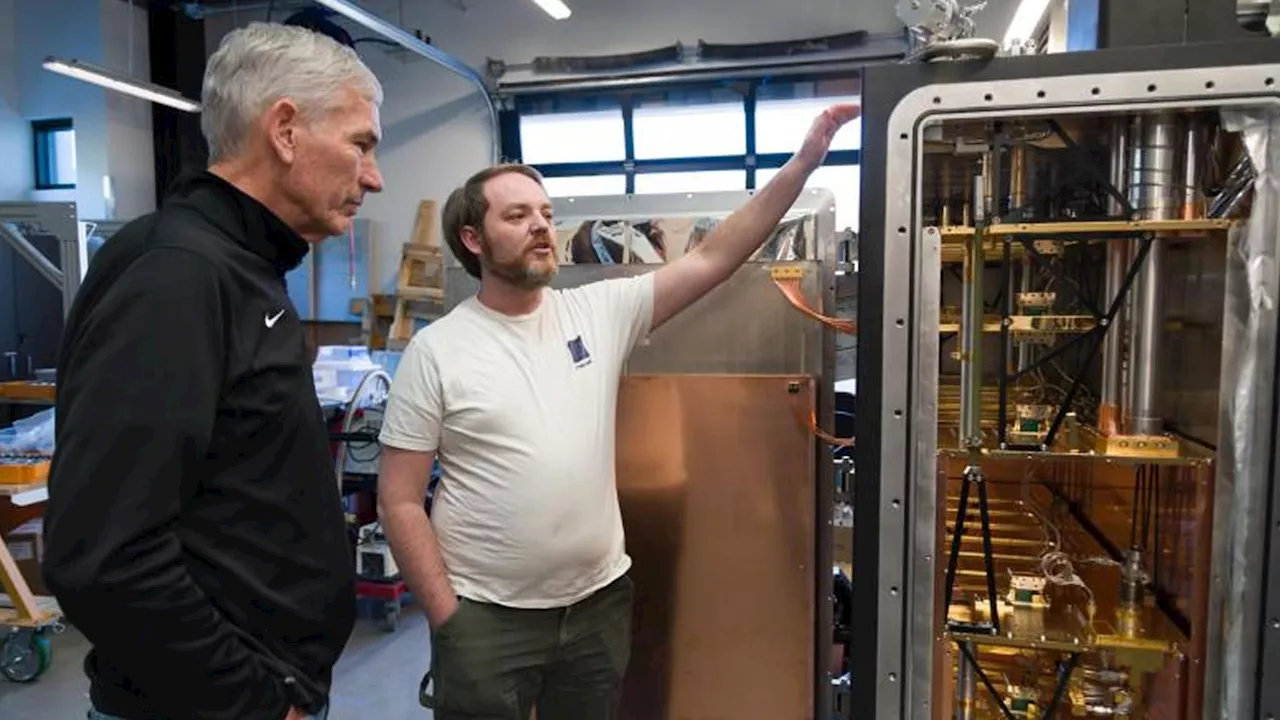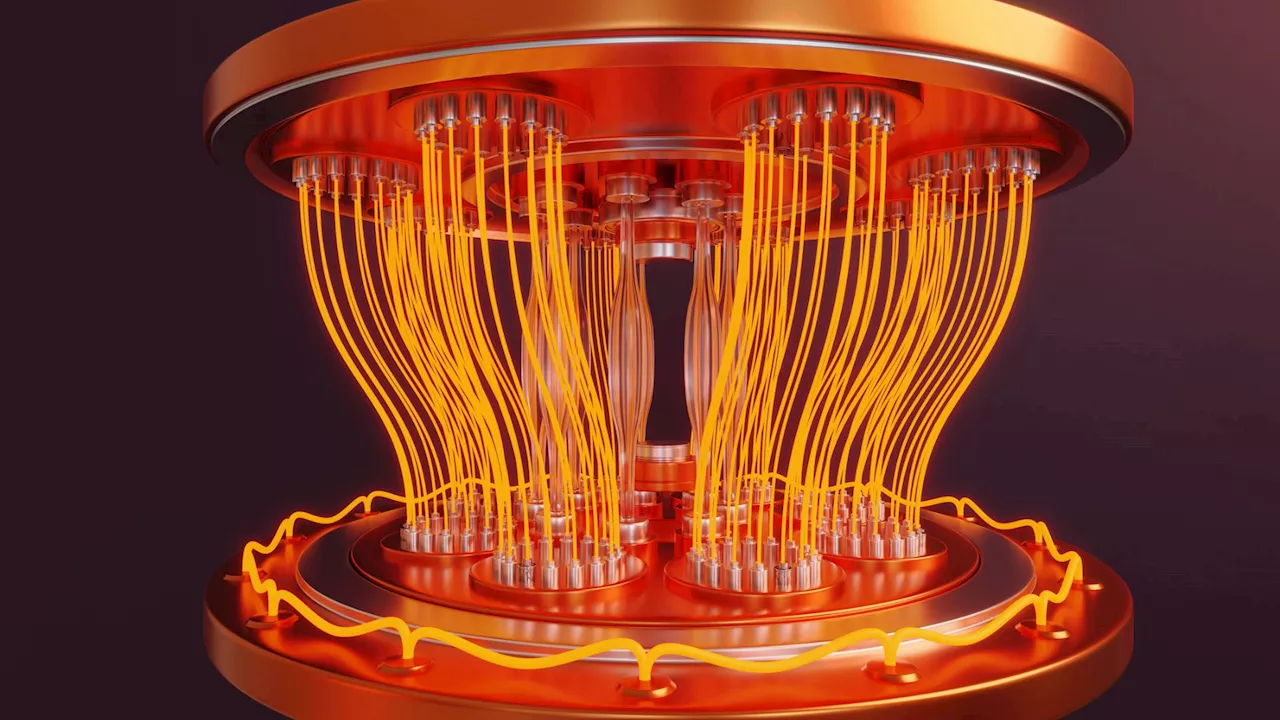Researchers have used a quantum annealer to simulate false vacuum decay, a process that could potentially trigger a catastrophic change in the Universe's structure. The simulation provides valuable insights into the dynamics of this phenomenon and its implications for the future of the Universe.
Physicists have made a groundbreaking discovery that sheds new light on the elusive phenomenon of false vacuum decay, a process that could potentially determine the ultimate fate of the Universe. Around 50 years ago, pioneering research in quantum field theory proposed that our Universe might be trapped in a false vacuum state. This means that while it appears stable, it could be on the verge of transitioning to a more stable, true vacuum state.
While this transition could trigger a catastrophic change in the Universe's structure, experts agree that predicting its timeline is extremely challenging. However, it is likely to occur over an astronomically long period, potentially spanning millions of years. In an international collaboration involving the University of Leeds, Forschungszentrum Jülich, and the Institute of Science and Technology Austria (ISTA), a team of researchers made significant strides in understanding false vacuum decay, a process linked to the origins of the cosmos and the behavior of particles at the smallest scales. Professor Zlatko Papic, from the University of Leeds, and Dr. Jaka Vodeb, from Forschungszentrum Jülich, led this collaborative effort. Professor Papic, Professor of Theoretical Physics at Leeds, explained: 'We're talking about a process by which the universe would completely change its structure. The fundamental constants could instantaneously change, and the world as we know it would collapse like a house of cards. What we really need are controlled experiments to observe this process and determine its time scales.' This research marks a significant advancement in our understanding of quantum dynamics, opening exciting possibilities for the future of quantum computing and its potential to study some of the most fundamental questions in physics. The team successfully used a 5564-qubit quantum annealer, a type of quantum machine designed by D-Wave Quantum Inc., to solve complex optimization problems. These problems involve finding the best solution from a set of possible solutions by harnessing the unique properties of quantum-mechanical systems. The researchers used the quantum annealer to mimic the behavior of bubbles in a false vacuum. These bubbles are similar to liquid bubbles forming in water vapor cooled below its dew point. It is understood that the formation, interaction, and spreading of these bubbles would trigger false vacuum decay. Dr. Jean-Yves Desaules, a postdoctoral fellow at ISTA who completed his PhD at the University of Leeds, co-authored the paper and stated: 'This phenomenon is comparable to a rollercoaster that has several valleys along its trajectory but only one 'true' lowest state, at ground level. If that is indeed the case, quantum mechanics would allow the Universe to eventually tunnel to the lowest energy state or the 'true' vacuum, and that process would result in a cataclysmic global event.' The quantum annealer enabled scientists to observe the intricate 'dance' of these bubbles, showing how they form, grow, and interact in real time. These observations revealed that the dynamics are not isolated events but involve complex interactions, including how smaller bubbles can influence larger ones. The team believes their findings provide new insights into how such transitions might have occurred shortly after the Big Bang. Dr. Vodeb, a postdoctoral researcher at Jülich, stated: 'By leveraging the capabilities of a large quantum annealer, our team has opened the door to studying non-equilibrium quantum systems and phase transitions that are otherwise difficult to explore with traditional computing methods.' Physicists have long questioned whether the false vacuum decay process could happen and, if so, how long it would take. However, they have made little progress in finding answers due to the complex nature of quantum field theory. Instead of trying to solve these intricate problems directly, the team focused on answering simpler questions that could be studied using newly available devices and hardware. This is considered one of the first times scientists have been able to directly simulate and observe the dynamics of false vacuum decay at such a large scale. The experiment involved placing 5564 qubits, the building blocks of quantum computing, into specific configurations representing the false vacuum. By carefully controlling the system, the researchers could trigger the transition from false to true vacuum, mirroring the bubble formation described by false vacuum decay theory
QUANTUM COMPUTING FALSE VACUUM UNIVERSE COSMOLOGY BLACK HOLES
United States Latest News, United States Headlines
Similar News:You can also read news stories similar to this one that we have collected from other news sources.
 Harvard Scientists Trap Molecules for Quantum Operations, Ushering in a New Era of Quantum ComputingFor the first time, scientists have successfully trapped molecules and used them to perform quantum operations, marking a significant leap forward in the field of quantum computing. This breakthrough opens up new possibilities for building more powerful and versatile quantum computers.
Harvard Scientists Trap Molecules for Quantum Operations, Ushering in a New Era of Quantum ComputingFor the first time, scientists have successfully trapped molecules and used them to perform quantum operations, marking a significant leap forward in the field of quantum computing. This breakthrough opens up new possibilities for building more powerful and versatile quantum computers.
Read more »
 Record cold quantum refrigerator paves way for reliable quantum computersQuantum computers require extreme cooling to perform reliable calculations. One of the challenges preventing quantum computers from entering society is the difficulty of freezing the qubits to temperatures close to absolute zero.
Record cold quantum refrigerator paves way for reliable quantum computersQuantum computers require extreme cooling to perform reliable calculations. One of the challenges preventing quantum computers from entering society is the difficulty of freezing the qubits to temperatures close to absolute zero.
Read more »
 Simulation of non-Hermitian skin effect in 2D with ultracold fermionsA research team has achieved a groundbreaking quantum simulation of the non-Hermitian skin effect in two dimensions using ultracold fermions, marking a significant advance in quantum physics research.
Simulation of non-Hermitian skin effect in 2D with ultracold fermionsA research team has achieved a groundbreaking quantum simulation of the non-Hermitian skin effect in two dimensions using ultracold fermions, marking a significant advance in quantum physics research.
Read more »
 How 'quantum foam' may have inflated the early universePaul M. Sutter is an astrophysicist at SUNY Stony Brook and the Flatiron Institute in New York City.
How 'quantum foam' may have inflated the early universePaul M. Sutter is an astrophysicist at SUNY Stony Brook and the Flatiron Institute in New York City.
Read more »
 Coldest place in known universe: New fridge could revolutionize quantum computingResearchers have developed a new ultra-cold fridge that could be a game-changer for quantum computer research.
Coldest place in known universe: New fridge could revolutionize quantum computingResearchers have developed a new ultra-cold fridge that could be a game-changer for quantum computer research.
Read more »
 SEALSQ Unveils World's First Quantum-Resistant Secure HardwareSwiss semiconductor company SEALSQ introduces its latest platform, QS7001, designed to provide quantum-resistant security. This breakthrough technology utilizes post-quantum cryptography algorithms, KYBER and DILITHIUM, to protect against attacks from both current and future quantum computers. The platform meets FIPS and Common Criteria standards and offers advantages in energy efficiency and performance compared to traditional secure microcontrollers. This development positions SEALSQ as a leader in the quantum-resistant hardware market, addressing the growing need for secure solutions in the age of quantum computing.
SEALSQ Unveils World's First Quantum-Resistant Secure HardwareSwiss semiconductor company SEALSQ introduces its latest platform, QS7001, designed to provide quantum-resistant security. This breakthrough technology utilizes post-quantum cryptography algorithms, KYBER and DILITHIUM, to protect against attacks from both current and future quantum computers. The platform meets FIPS and Common Criteria standards and offers advantages in energy efficiency and performance compared to traditional secure microcontrollers. This development positions SEALSQ as a leader in the quantum-resistant hardware market, addressing the growing need for secure solutions in the age of quantum computing.
Read more »
